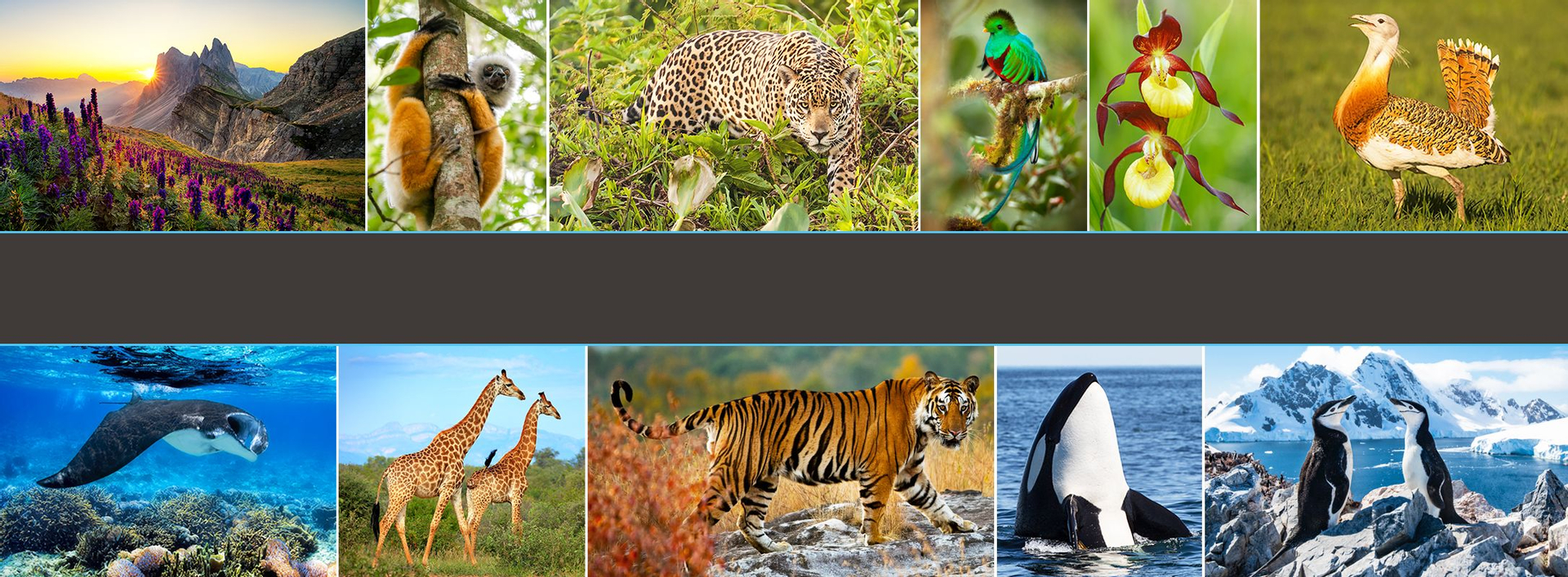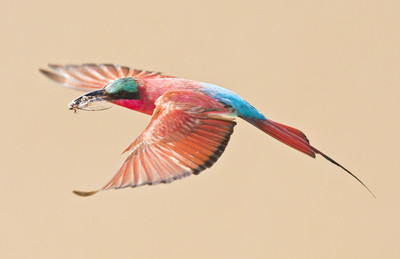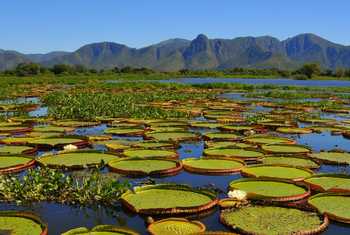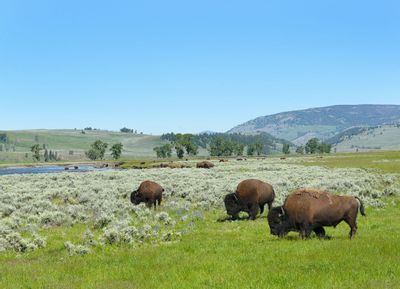
World’s Best Wildlife Holidays for 2026/27

35 of the World’s Best Wildlife Holidays for 2025/26
 By Dominic Couzens
By Dominic Couzens1st January 2023 (Last Updated: 23rd May 2025)
Dominic is a Naturetrek tour leader and one of Britain's
best known and most prolific natural history writers.
What makes the perfect wildlife holiday? Some people simply want to see as many species as they can – of birds, or mammals or butterflies. Some only seek that special icon, such as a Tiger or an Orca. There are those that revel in spine-tingling experiences, however they may happen, coming back with memories rather than lists. Still others thirst for the thrill of the new, visiting a part of the world far from their own experience. Many clients crave a mixture of wildlife and comfort. Adventure might be the key, where the animals come with a white-knuckle ride. Others want to dip into culture and history, as well as natural history.
Here at Naturetrek we’ve been putting our heads together to come up with a selection that covers all this and more. These holidays cover every month of the year, much of the world, and a good range of the iconic creatures of the planet.
Here are our top 35 recommended tours for 2024 & 2025 - for further information, call us on 01962 733051 to speak to our friendly experts, or send us an email and we’ll get right back to you!
1. Botswana's Desert & Delta
This is the Africa most people dream about. The savanna and marshlands teem with game, which in turn attracts exciting predators such as Lions, Leopards and Cheetahs to stalk them. Elephants and Giraffes stride over the terrain, and Hippos lounge and bicker in the waterways. This mammal tour takes us to the Khwai region, overflowing with herds of Impala, Red Lechwe and Waterbuck, and also to Moremi Game Reserve, which, among other highlights, is one of the best places to see the increasingly threatened African Wild Dogs. Mammals are the focus, and we will take a number of night drives and some thrilling daytime game walks.
View Tour Page
Lion
2. Madagascar's Lemurs
Perhaps the most familiar – and endearing – of Madagascar’s unique wildlife are the lemurs. Today they range in size from the largest, the Indri, to the diminutive mouse lemurs, the smallest of which can sit in an egg-cup! This, our most popular Madagascar holiday, will take you lemur-watching within some of the island's very best wildlife reserves including Ranomafana, Andasibe and the bizarre spiny forests around Ifaty. It includes the opportunity to enjoy the enchanting dawn chorus of Indri families at Perinet, a sound often described as ‘whale-song in the trees’, plus the rare Golden Bamboo Lemur and troops of charming Ring-tailed Lemurs. Whilst the lemurs will no doubt take centre stage, rest assured that a supporting cast of birds, reptiles and other wildlife will not be ignored!

Ring-tailed Lemur
3. Namibia's Etosha Pan & Skeleton Coast
At times, the scenery of Namibia looks like a cross between Africa and a set from a sci-fi fantasy. Where else can you see Elephants wandering around in a true desert, or antelopes under the shadow of the world’s highest sand-dunes? And the wild skeleton coast, a graveyard of ships, is as elemental a place as you will ever go. Namibia is one of the least densely populated countries in Africa, and consequently the wildlife is still thriving. Even Black Rhinoceros is still relatively common. The great Etosha Pan is one of the finest game viewing sites in Africa, while other sites we visit, such as Damaraland and Walvis Bay, offer their own exciting specialities.
View Tour Page
Gemsbok
4. Zambia's South Luangwa National Park
South Luangwa National Park is Zambia’s foremost wildlife reserve. Bordered by the Luangwa River, it encompasses over 9,000 square kilometres of wilderness and is home to an abundance of birds, mammals and other wildlife. This birdwatching tour is special in that it is a single-centre holiday, based for 7 nights at Kafunta Lodge. From here you can enjoy morning birdwatching drives into the national park and return each evening on optional night safaris in search of nocturnal birds – including Pel’s Fishing Owl and Pennant-winged Nightjar – and hunting Lions and Leopard. In November, flocks of colourful Southern Carmine Bee-eaters nest along the Luangwa River, then, as the ‘Green Season’ sets in, colourful weavers, widows and whydahs moult into their spectacular breeding plumages.
View Tour Page
Southern Carmine Bee-eater
5. Tanzania Highlights
If there was ever a classical safari tour – indeed a definitive African wildlife tour – then this surely has to be it. We visit some of the most famous sites for big game in the world, including the incomparable Ngorongoro Crater and Serengeti National Park, where herds of herbivores still roam in barely imaginable numbers, and where the large predators take advantage. We will see Lions and Wildebeest, Cheetah and Gazelles, together with other icons such as Ostrich, Giraffe, African Buffalo and Hippopotamus. The scenery, with Mount Kilimanjaro in the background, would be exceptional for any tour, but here it is a backdrop to one of earth’s great wildlife concentrations.
View Tour Page
Plains Zebras, Blue Wildebeest and Lesser Flamingoes
6. Uganda – Mammals & Mountains
There’s no need to leave the Mountain Gorillas to Sir David Attenborough – you can go and see them yourself in the wild! The setting is what must be one of the most exotic forests in the world, the Bwindi Impenetrable Forest, which also teems with other monkeys and elusive birds and mammals. Just doing that is the experience of a lifetime, but on this trip you can also encounter another of our close relatives, the Chimpanzee, at Kibale Forest in the Rwenzori Mountains. And if that wasn’t enough, we also enjoy some classic game viewing in Uganda’s celebrated Queen Elizabeth National Park.
View Tour Page
Mountain Gorillas
7. Nepal – A Birdwatching Tour
Nepal is not to be missed, and on this tour we take you to the country’s three premier wildlife reserves – Chitwan National Park, Koshi Tappu Wildlife Reserve and the forested hills of the Kathmandu Valley. Beginning in Kathmandu we’ll take in some of the valley’s cultural and architectural highlights as well as do some birding, before transferring to Chitwan National Park where we’ll look for such sought-after species as Red-headed Trogon, Lesser Racquet-tailed Drongo and White-tailed Rubythroat. Our next stop is Koshi Tappu Wildlife Reserve, one of Asia’s finest wetlands, where birds we’ll look for include Swamp Francolin and Bengal Florican, and mammals include wild Water Buffalo and Nilgai. We’ll explore on foot and by boat before reluctantly starting our journey home.
View Tour Page
Red-headed Trogon
8. India – Tiger Direct!
You never forget your first wild Tiger. It leaves you awed, shaking; many people cry with emotion. Sometimes you hear the alarm call of a deer or monkey first, and you know the Tiger is close, increasing the drama. These large predators, immaculately camouflaged by their famous stripes, can be elusive, but in Pench National Park and nearby Kanha National Park, in the heart of central India’s Tiger country, the chances of multiple encounters with the big cats are very high. There’s also a great supporting cast including Leopard, Dhole (Wild Dog) and many colourful birds.
View Tour Page
Tiger
9. Sri Lanka – Blue Whales & Leopards
Every holiday needs a transcendent memory and on this tour, the subject of that will probably be a bit of a no-brainer. You take a boat offshore to see the largest animal that is known to have ever lived, bigger than any dinosaur, the Blue Whale. The offshore waters here are the most reliable spot in the world for this mighty creature, and this is an animal that never disappoints – even the tail is just awesome. How do you follow that? Well, a visit to Yala National Park in the south of Sri Lanka is a pretty good place to try, famous for its diurnal sightings of the elusive and charismatic Leopard. There are also Asian Elephants and a wealth of fabulous birdlife.
View Tour Page
Leopard
10. Borneo’s Orangutans
They might currently be most famous for being under threat from palm oil, but Orangutans, the big, hairy red apes with the long faces and close-set eyes, can still be found in a few special places on Borneo. There will be ample opportunity to get to know them on this tour, from enjoying the animals at Sepilok Rehabilitation Centre, to searching for wild individuals along the Kinabatangan River and at the incomparable Danum Valley Conservation Area, one of the best wildlife sites in the world. Other highlights are many, including the equally remarkable and comical Proboscis Monkey, Swiftlets and Bats at Gomantong Caves and a superb range of thrilling forest creatures, from Colugos to Helmeted Hornbills.
View Tour Page
Orangutan
11. Ladakh's Snow Leopards (lodge-based) & Ranthambore's Tigers
Not long ago you had about as much chance of seeing a Snow Leopard as a Yeti. Eventually, the areas where these extraordinarily elusive big cats frequent were discovered, but you needed virtually to mount an expedition and cope with the cold in tents in order to glimpse one, if you were lucky. On this trip, you can achieve the near impossible – actually see a truly wild Snow Leopard, and maintain a degree of comfort, at least at the end of the day. The supporting cast includes Blue Sheep and Asiatic Ibex, and some incredible birds such as Snowcocks and Ibisbill. And you can add in Tigers as an optional 4-day extension!
View Tour Page
Snow Leopard
12. Realm of the Black Panther
If ever an animal lived in the shadows, in that twilight between fantasy and reality, it is the Black Panther. As flesh and blood, it is the black morph of the Leopard; in folklore, it is renowned in legend for its almost magical elusiveness. These days, though, it is possible to see this remarkable mammal in Kabini Wildlife Sanctuary, in India, and here, in the heart of wild India, is where this tour is based. The animal we seek is tricky, but the supporting cast is compelling indeed – “spotty” Leopards, large herds of Asian Elephants, deer and Wild Boar aplenty, with a wonderful range of colourful birds. And all this in a place of dreams!
View Tour Page
Black Panther (David Raju)
13. Antarctica, The Falklands & South Georgia
Antarctica is a land of superlatives. It is the coldest, windiest, driest, iciest and highest of all the major landmasses of the world. It is a continent of extremes, but also one of extreme beauty! Those fortunate enough to explore its icy shores cannot fail to be awe-struck by the shear grandeur of the landscape, the towering glaciers, rugged snowcovered mountains and huge ice-bergs calved into a myriad of shapes by the relentless pounding of the Southern Ocean. This encircling ocean is, in turn, one of the richest of all seas and the basis for the food-chain that supports Antarctica’s huge concentration of wildlife. Every spring, as the pack-ice slowly retreats, millions of penguins, seabirds and other creatures leave the vastness of these turbulent waters to converge on the continent, and its surrounding necklace of islands, to breed and raise their young. By mid-January the breeding season is at its peak, penguins and albatrosses are busily feeding chicks and the race to fledge is in full swing before darkness descends once more heralding the return of winter’s even icier grip. An expedition to Antarctica is no small undertaking and, for most people, will be something they only do once in their life. If you have a serious interest in the wildlife, or perhaps want the best possible opportunities for photography, you will want to make the most of your time and considerable investment. After the success of our cruise in January 2024, we will next be taking on a full charter of the 116-berth, ice-strengthened, MV Ortelius for in early 2027. It is never too soon to register your interest!
View Tour Page
Chinstrap Penguins
14. Ardnamurchan - Wild Scotland in Spring
Ardnarmurchan is a spectacularly rugged and picturesque peninsula with an array of tranquil lochs and Caribbean-esque sandy beaches with turquoise waters. This week-long tour will seek out the best of the spring wildlife, including Golden & White-tailed Eagle, Great Northern Diver (with a chance of Red & Black-throated Diver) and Otter foraging in the bays. The woodlands around our accommodation hold a high density of Pine Martens (which we’ll hope to see every night!) and provide cover for both Red and Roe Deer, as well as the secretive Red Squirrel. We’ll also look for Hen Harrier & Short-eared Owl on the moors and enjoy the thousands of puffins on the Treshnish Isles. There will be excellent viewing points where passage migrant birds can be spotted – including the most westerly point on mainland Britain, Ardnamurchan Point.
View Tour Page

Pine Marten
15. Spain's Coto Doñana & Extremadura
Within touching distance of the ‘Spain’ of the holiday brochures is a world that can hardly be more different – sparsely populated, wildlife rich and befitting the description of wilderness. This tour visits two very different refuges which fit this description. The Coto Doñana is one of Europe’s great wetlands, teeming with wildlife, from dragonflies to flamingoes; on this birdwatching tour we may see some exciting rarities such as Crested Coot and Marbled Duck. Meanwhile, the rolling plains of Extremadura hold good populations of Great and Little Bustards, Great-spotted Cuckoos and Spanish Imperial Eagles. Calandra Larks serenade us from above as we enjoy the rural fullness of this part of Spain.
View Tour Page

Great Bustard
16. Spain – Realm of the Iberian Lynx
Searching for the Iberian Lynx, the world’s rarest cat, is a big challenge made delightful by the glorious surroundings and equable winter climate of Andalucía. This tour covers both the world’s Lynx refuges, the Coto Doñana, where local guides will take us to known hotspots in the low-lying dunes and scrub, and the nearby Sierra Morena, where we will spend time scanning the scrubby hillsides from watchpoints. Seeing a Lynx will be a triumph, while we will inevitably revel in finding much else, such as Spanish Imperial Eagles, Cinereous Vultures, Marbled Ducks, Red Deer and Wild Boar.
View Tour Page

Iberian Lynx
17. The Camargue in Spring
The Camargue is one of Europe’s best known wetlands – a 'must' for any keen naturalist. Based at the same small, family-run hotel on the outskirts of Arles for all four nights, we will explore the saline habitats, reedbeds and shallows of the Camargue, the dry stony steppe of La Crau, and Les Alpilles (a range of limestone hills covered with aromatic herbs and scattered pines), in search of exciting and exotic Mediterranean bird species at the peak of the breeding season. This area of France is especially rich in wildlife, history and local culture and we hope to enjoy a flavour of this diversity with some quality birdwatching, good photographic opportunities, a visit to the Roman amphitheatre in Arles and ample time each day to enjoy our famous Naturetrek French picnic lunches!
View Tour Page

Greater Flamingoes
18. Romania’s Danube Delta & Carpathian Mountains
Really two holidays in one, this is a tour of happy contrasts. One moment we are in the high Carpathians looking for Wallcreepers and Nutcrackers, the next we are on a floating hotel in the vast Danube Delta, surrounded by mighty flocks of waterbirds and clouds of dragonflies. The hills around Zarnesti are in unspoilt Transylvania, full of turreted castles, legends and Brown Bears, which we’ll see from a hide. A day’s drive away, the Danube Delta is 3000km2 of reeds, channels, riparian woodlands and islands, a world of Pelicans, Cormorants, Herons and waders, as well as on-board meals, drinks and luxury. Take your pick – except, you get both!
View Tour Page

Red-footed Falcon
19. The Somerset Levels
The Somerset Levels in deep winter is a place of big skies and even bigger bird flocks. The most famous of these are the huge pre-roost assemblies of Starlings, numbering over half a million birds, which darken the sky over the local marshes of the United Kingdom each evening and, if the fancy takes them, embark on extraordinary aerobatic manoeuvres in the crisp winter gloaming. Incredible though this sight is, the massive flocks of ducks and waders, especially at West Sedgemoor, are not far behind. As a bonus, The Somerset Levels has also become the long-legged bird capital of Britain, with Great Egret, Bittern and Common Crane all present in the area.
In spring, the marshes come alive with noisy warblers and abound with Marsh Harriers, Egrets, Ducks and Cuckoos.
View Tour Page

Eurasian Bittern
20. Spitsbergen – Realm of the Polar Bear
It’s the moment when an Arctic cruise turns red-hot – the first sighting of a Polar Bear, the top predator of this stunningly beautiful, icy realm. You heard stories when you were a child, you’ve seen them on TV, but nothing prepares you for the spine-tingling thrill of seeing one in the wild. Yet the Polar Bear is only the tip of the iceberg on this cruise of Norway on our specially chartered vessel. Watching from deck and sometimes using Zodiacs for landing, we will explore the archipelago for Walrus, Arctic Fox, various seals and whales (even Blue Whale) plus a host of birds, such as Puffins, Grey Phalaropes and that ghost of the north, the Ivory Gull.
View Tour Page

Polar Bear
21. Wengen – Alpine Flowers of the Swiss Alps
Mountain flowers are one of the wonders of the world. Often growing in shallow soil in harsh environments, with a short growing season, they are the colourful, if ephemeral glory of the uplands. There are few more scenic locations in which to search the rich meadows, rocky outcrops, scree, snowmelt and forest edge than Switzerland’s Bernese Oberland, with its magnificent backdrop of high mountains, including the peaks of the Eiger and the Jungfrau. Here blooms of all kinds abound, from frilly-skirted snowbells to Lady’s Slipper Orchids, and from deep purple Alpine Sainfoin to yellow Alpine Pasque-flower and the impossibly deep blue of gentians. It’s flowery heaven!
And if you love it, you can come back for more in July to look for butterflies.
View Tour Page

Naturetrek group botanising in Wengen
22. The Italian Dolomites
Flowers don’t normally assault you, but here in the Italian Dolomites, at the height of summer, they certainly overpower your senses. Their sheer exuberance, the riot of colour, the soaring settings in which they are found, all these things make a botanical holiday here an overwhelming experience. The stunning Dolomites in Italy are a picture all of their own, with their jagged peaks and crystalline surfaces that twinkle, benignly overlooking the plush valleys. It’s a place to gawp, to walk slowly, to enjoy the food and relish a kaleidoscope of plants, from lilies to snowbells and from orchids – botanical royalty – to the incomparable King-of-the-Alps.
View Tour Page

The Rosengarten
23. Brazil – Just Jaguars
Throughout much of its wide range the Jaguar stays in the shadows, shy and secretive, leaving nothing behind except signs and rumours. In the Pantanal of Brazil, however, a freak combination of perfect habitat, high population and abundant food means that this apex predator can be seen with some reliability. We visit the heart of South America’s largest wetland, staying on a floating hotel and taking boat trips into the best area for Jaguars on earth! Giant Otters are common here, too. Elsewhere on this tour we have a chance of seeing Giant Anteaters and Hyacinth Macaws, among other highlights.
View Tour Page

Jaguar
24. Ecuador and the Galápagos
Set astride the Equator in the Pacific Ocean, 900km from the coast of South America, the volcanic island archipelago of the Galápagos has been a cradle for evolution and, famously, a crucible for evolutionary thought. Isolated for millions of years, the islands have nurtured a ragtag assortment of unique animals and plants. On this memorable tour, we cruise around the islands on our own charter vessel, very much at our own pace, truly absorbing the atmosphere of the different islands, and seeing almost all the famous inhabitants such as Galápagos Penguins, Flightless Cormorants, Marine Iguanas, Giant Tortoises and the famous finches and mockingbirds that inspired Charles Darwin.
View Tour Page

Blue-footed Boobies
25. Chile's Pumas & Penguins
Big cats have an irresistible allure (re-affirmed by the number of people who travel with us to find them!). But no other cat quest anywhere takes place in scenery like this. The incomparable Torres del Paine National Park, with its tall mountains sticking up like the vertebrae of a huge carcass, clear-blue lakes and wide open expanses, is arguably the best place in the world to see the near-mythical Puma (or Mountain Lion). Not far away, and every bit as charismatic in a different way, are some colonies of penguins, and we shall make an excursion to see the only mainland colony of King Penguins in the world, as well as an impressive gathering of 50,000 pairs of Magellanic Penguins.
View Tour Page

Puma (Tom Ambrose)
26. Northern Argentina – From the Andes to Iguazú
The tour travels up through the yungas cloudforests around the city of Salta to the high puna steppe, home to hardy Tawny-throated Dotterel and herds of Guanaco. It also includes a visit to Laguna de Pozuelos, a soda lake that sits high on the altiplano and around the shores of which breed Andean and Puna Flamingoes, Andean Avocets and much more. At Iguazú we will not only admire the Falls themselves, but will spend time enjoying the flocks of Great Dusky Swifts flying around and through the cascades, and will explore the forests that surround the Falls in search of Toco Toucan, Blond-crested Woodpecker, Swallow-tailed Manakin and South American Coati.
View Tour Page

Iguazú Falls
27. Colombia – Birds & History
Colombia has more species of birds that any other country on earth, so you might say that it isn’t a bad destination for a birder. But it also has a vibrant history and culture, and this tour offers a combination of both. We will go sightseeing in Bogotá, while also exploring its gardens for wildlife. We will visit a coffee plantation one day, and a cloudforest on another. We will admire the town square of Jardín, but also visit a nearby Cock-of-the-rock lek. We will visit the high-altitude páramo, and also a spectacular castle. It's an eclectic combination, and an unusual way to sample the world’s richest avifauna!
View Tour Page

Andean Cock-of-the-rock
28. Brazil – A Wildlife Cruise to the remote Pantanal National Park
For years, ecotourists have visited Brazil’s huge landlocked wetland, the Pantanal, usually exploring from the highway, the Transpantaneira, and associated dry land lodges. On this tour, we do something very different, taking a cruise, no less, into some of the most remote parts of this region, some 140km into the core of the Pantanal National Park. It is a vast network of channels and pools, many cloaked with enormous waterlilies, fringed by patches of woodland and forest, and all overlooked by imposing granite mountains. We will enjoy this remote region from the comfort of a houseboat. We should see the star of the Pantanal, the Jaguar, plus Giant Otters and a host of colourful birds.
View Tour Page

Pantanal National Park
29. Baja California & Sea of Cortez
What would be top of your list of whale and dolphin sightings? Perhaps it would be seeing a Blue Whale, no less than the largest animal in the world, with its huge spout, as high as a fountain? Perhaps it would be experiencing a “mega-pod” of hundreds of dolphins? Perhaps it would be meeting a great whale very close-up, eye to eye? On this cruise down the western coast of Baja California and into the cetacean-rich Sea of Cortez, all these experiences are possible – indeed, likely! We even have a chance of swimming with Whale Sharks, and snorkelling among the smaller, colourful fish in the rich, calm waters.
View Tour Page

Grey Whale
30. Yellowstone in Spring
Spring is a wonderful time to visit Yellowstone National Park and this tour focuses on the region’s wildlife and geological highlights at a time of year when the reserve is transitioning from winter to summer. We begin with a flight to Jackson Hole where we will be based for four nights while we explore the Grand Teton National Park. Next we head north into Yellowstone itself and explore the southern half of the park from the town of West Yellowstone. Our four nights here will give us ample time to look for a variety of mammals including Pronghorn Antelope, North American Bison and Grizzly Bear, plus birds including Western Tanager and Williamson’s Sapsucker. Finally, we drive north-east to the small town of Cooke City for three nights, from where we will explore the northern half of the national park in search of Bald Eagle, Evening Grosbeak, Bighorn Sheep, Rocky Mountain Elk and the Grey Wolves of Yellowstone’s famous Lamar Valley.
View Tour Page

North American Bison
31. Whales & Dolphins of Monterey Bay
The coast of California offers much more than beach bodies, sunshine, sand and surf. Just off the coast is a deep water trench, from which upwellings of nutrients provide an irresistible attraction for a superb variety of cetaceans. Late summer and early autumn are the best time to appreciate them, when Humpback Whales slap their long flippers on the surface, the mighty Blue Whale spouts as high as a building, and pods of menacing Orcas patrol for unsuspecting sealions. In this tour we have at least four boat trips into the bay, and will also enjoy watching some land mammals such as Sea Otters and Northern Elephant Seals. Needless to say, Californian hospitality, wine and comfort will be appreciated too.
View Tour Page

Humpback Whales
32. Costa Rica
A Costa Rica birding holiday is … a holiday. It is so easy to see a vast range of birds in this wonderfully biodiverse country that there is plenty of time for coffee breaks, good food, conviviality and comfort. What could be more delightful than sipping a beer and watching the comings and goings of a dozen species of hummingbirds at the lodge feeders, along with a wide range of other, invariably dazzling birds? The delight is multiplied by the country’s progressive approach to conservation and ecotourism. The many highlights include Resplendent Quetzal, various toucans, Scarlet Macaw, Sunbittern and Roseate Spoonbill.
View Tour Page

Resplendent Quetzal
33. Panama – Canopy Tower
It’s a big leap for a British birdwatcher to dip their feet into the huge well of Central and South American birds, where you can see as many species in a couple of days as you otherwise might expect in a year. And what are these birds with strange names, such as antbirds, manakins and cotingas? There is arguably no better place to get a handle on the Neotropical avifauna than Panama’s Canopy Tower, where your Naturetrek leader and bird books are on hand to help in every eventuality! A former radar communications tower, it is just tall enough to allow a rooftop view over the rainforest canopy, and the wonders of a dawn here are too good to miss. The surrounding Soberanía National Park offers superb extra birding on short excursions.
View Tour Page

The Canopy Tower
34. Alaska – America's Last Frontier
Wilderness is perhaps an overused word, but in Alaska, America’s largest state, it is the defining characteristic. Almost a country in itself, Alaska encompasses vast stretches of countryside, from taiga to rocky coastlines, where wildlife completely holds sway and people are almost absent. It is a magnificent unspoilt land where big predators still roam and are at the top of the food chain. There are Black and Grizzly Bears and Grey Wolves, while grazing animals include Caribou and Dall’s Sheep. The birdlife will take your breath away: flocks of seaducks include Common, King and Spectacled Eider, whilst the seabird cliffs host Tufted and Horned Puffins and masses of auklets, and the predators include Gyrfalcons and Snowy Owls. Even the summer wildflowers appear in bulk! This tour gives a 14-day flavour of this compelling place.
View Tour Page

Grizzly Bear
35. Spring Birding in New York City
New York City is undoubtedly one of the most famous cities in the world. Who hasn’t heard of its iconic landmarks such as the Statue of Liberty and the Empire State Building? Its teeming streets provide the backdrop to any number of movies, so familiar that we think we’ve been there, even if we haven’t! What New York City is not famous for, but should be, is birding. Situated on the Atlantic flyway, and providing a remarkable range of habitats, from salt marshes and open salt water to woodland and scrub, the city is a magnificent birding area and, on a good spring day, you can notch up 100 species. In spring, many of these, including the stunning array of warblers, are in their spring finery, as chic as any human New Yorker. This tour combines great birding and time to be a “normal” tourist!
View Tour Page




 Loading search...
Loading search...